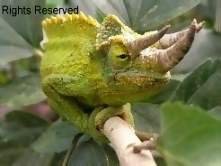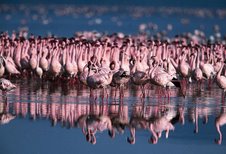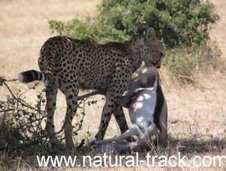There are many species of snakes in the world. The enormous
ones like the python, which can swallow animals as large as a whole gazelle.
Snakes can be found in all types of habitat, while some climb trees, others
live under ground, and still others found in lake water and even sea water.
Snakes occur in a large variety of colors ranging from dull
to brilliant with striking pattern. Snake that have dull coloring use it for
camouflaged, while those which are brightly colored are usually poisonous. They
use their bright color to warn predators to stay off. Some non poisonous snakes
mimic the pattern and bright colors of poisonous snakes to fool predators.
Snakes are cold blooded, which means they do not have the
ability of generating adequate amount of heat in order to keep their body
temperature at a constant level. Instead they are dependance on heat from their
surroundings and the sun to control the temperatures of their body. This is the
reasons most of snakes are found in humid and warm climes of tropical regions.
Snake are reptiles with an elongated body that is flexible
and limbless. A snake body frame is dependent on the habitat they live in. for
example, snakes that burrow underground have a tendency of being more compact
whereas the type that live in trees tend to be slender and long equipped with a
prehensile tail which they use to grasp branches while the body of aquatic
snakes is generally flattened.
Snakes do not have eyelids; a transparent scale protects
their eyes. They are deaf to airborne sounds and they hear by picking up
vibrations through their jawbones. The part of the body in direct contact with
the ground have incredible sensitive hearing which enables a snake to sense and
detect the position of prey.
Snakes use their forked tongue to smell. The tongue gathers
particles that are airborne which it then passes to a specialized organ located
on the roof of the snake’s mouth that gives a directional sense of smell and
predators simultaneously. To determine the presence of prey or predators in the
local environment, the snakes keep their tongue constantly its motion.
A venomous snake usually has broader head that bulges out
behind its eyes where it stores its venom. All snakes are purely carnivorous.
As they bit or chew their food to pieces they have to swallow the prey. Snakes
have more teeth to bite and grip their prey securely. Snakes have a unique
ability of swallowing their prey times larger than their mouth, they can do
this because of the special tendons.
Snakes have the ability of surviving without food for many
days at a stretch after having a filling meal. This is because they have a slow
rate of metabolism. The snake’s heart is able to move around its body. This
adjustment protects the heart when large prey passes through the esophagus.
A snake becomes dominant after eating while digestion takes
place. Digestion of snake is intensive activity. Therefore if disturbed the
snake’s digestive enzymes dissolve and absorb everything but the prey hair and
claws which are eliminated it’s excreted.
Snakes are eaten by communal tribes, snakes soup is
considered good to warm up the consumer’s body during cold weather. Snakes
blood is mixed with liquid to improve its taste. Snakes shed their skin
regularly while they grow a process called molting.
They shed their skin by rubbing their head against something rough and
hard, resulting in the skin peeling of from their heads enabling them to crawl
out, turning the skin inside out. Older snakes may shed only twice a year while
the younger may shed up to four times a year.
Snake usually mate in colder climate. Male snake try to
attract attention of a female snake by fighting with other male snakes who also
want the same female snakes only to win the fight. Female give birth to baby
snakes in about 2 months, they abandon the eggs shortly after laying them. Some
snakes retain the eggs within their bodies until they are ready to hatch. These
babies are born covered with a thin membrane.
The baby uses an egg tooth to rip off membrane and crawl
free.
PKP. Kenya safaris
Natural Track Safaris.
Natural Track Safaris.









No comments:
Post a Comment